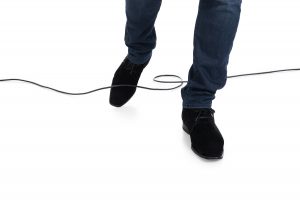Understanding Florida Slip-And-Fall Cases
 Michael Babboni
Personal Injury
Premises Liability
Slip-and-fall cases fall under an area of law known as premises liability. The basic idea of premises liability is that the owner of a property is required to take reasonable steps to keep it safe for visitors.
Michael Babboni
Personal Injury
Premises Liability
Slip-and-fall cases fall under an area of law known as premises liability. The basic idea of premises liability is that the owner of a property is required to take reasonable steps to keep it safe for visitors.Owners of businesses have a particularly high duty of care they must meet in keeping their customers safe. Customers are what is known as a business invitee, someone who is invited to enter a property for a purpose related to business dealings with the property owner. With respect to customers, business owners must maintain their property in a reasonably safe condition, repair any hazards on the property, and warn customers of any dangers on the property that have not been repaired.
More importantly, business owners have a duty to routinely inspect their property for dangerous conditions. Thus, they can be liable for dangerous conditions they did not actually know about, but should have known about through routine inspections.
The classic scenario for a slip-and-fall case is where a customer in a grocery store slips and injures himself on a wet patch on the floor. However, the term slip-and-fall also includes scenarios in which a customer trips over an object or an uneven surface or steps into an unexpected hole or low spot on a path.
How Do You Prove A Business Owner’s Negligence?
Slip-and-fall cases in Florida are governed by statute. Under the statute, an injured party is required to prove that the business owner had
- - actual knowledge of the dangerous condition and failed to take action to remedy it; or
- - constructive knowledge of the dangerous condition and should have taken action to remedy it.
Constructive knowledge is an odd device used for legal purposes, but in this case, constructive knowledge can be established by proving:
- - the dangerous condition existed for so long that a reasonable business owner should have known about it; or
- - the condition occurred on a regular basis and was therefore foreseeable.
For example, a gallon of spilled milk in a grocery store that the business owner failed to clean for several hours would likely establish constructive knowledge under the first test. A leaky roof that caused a puddle of water to form on the floor every time it rained would likely establish constructive knowledge under the second test.
Who Is Responsible?
The question of who is responsible in the case of a slip-and-fall in a business can become complicated, especially in a multi-business area like a mall. For example, let’s say you’re in the food court of a shopping mall, and you’re walking to the sandwich shop. You slip and fall on a drink from the pizza shop that was spilled earlier because the lids at the pizza shop never close securely. Who is responsible for your injury?
It could be the owners of the sandwich shop for failing to clean the spill in front of their store. It could be the owners of the pizza shop for providing defective lids on their cups. It could be the owners of the mall for failing to keep the food court area clean. The answer could be all of them, with varying degrees of fault.
As you can see, the answer is not always straight forward, and it is important to have an experienced personal injury that can sort through the facts and hold the correct parties accountable.
